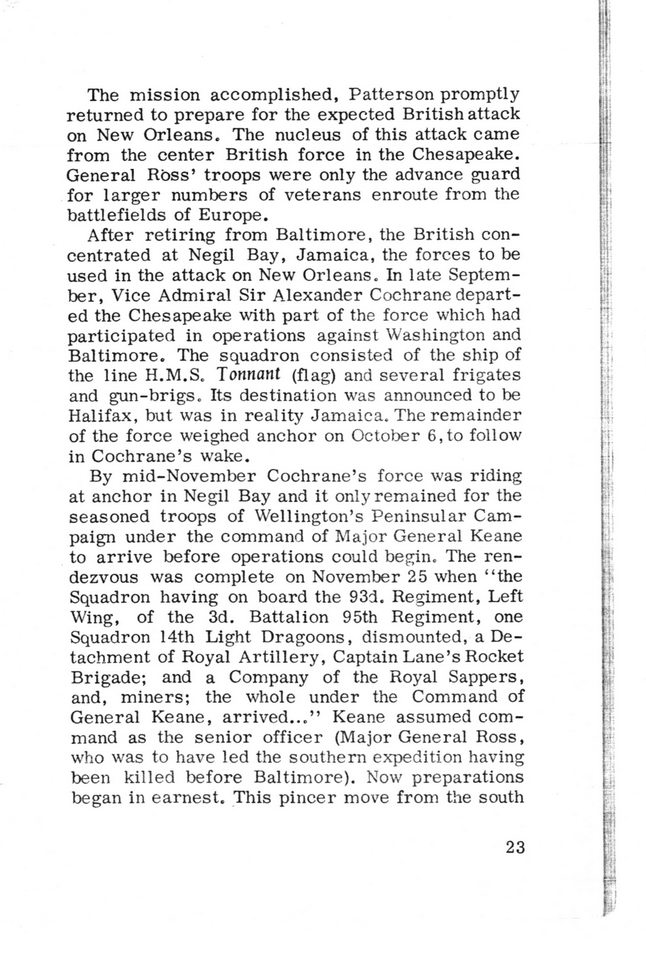This text was obtained via automated optical character recognition.
It has not been edited and may therefore contain several errors.
The mission accomplished, Patterson promptly returned to prepare for the expected British attack on New Orleans. The nucleus of this attack came from the center British force in the Chesapeake. General Ross? troops were only the advance guard for larger numbers of veterans enroute from the battlefields of Europe. After retiring from Baltimore, the British concentrated at Negil Bay, Jamaica, the forces to be used in the attack on New Orleans. In late September, Vice Admiral Sir Alexander Cochrane departed the Chesapeake with part of the force which had participated in operations against Washington and Baltimore. The squadron consisted of the ship of the line H.M.S. Tonnant (flag) and several frigates and gun-brigs. Its destination was announced to be Halifax, but was in reality Jamaica. The remainder of the force weighed anchor on October 6,to follow in Cochrane?s wake. By mid-November Cochrane?s force was riding at anchor in Negil Bay and it only remained for the seasoned troops of Wellington?s Peninsular Campaign under the command of Major General Keane to arrive before operations could begin. The rendezvous was complete on November 25 when ?the Squadron having on board the 93d. Regiment, Left Wing, of the 3d. Battalion 95th Regiment, one Squadron 14th Light Dragoons, dismounted, a Detachment of Royal Artillery, Captain Lane?s Rocket Brigade; and a Company of the Royal Sappers, and, miners; the whole under the Command of General Keane, arrived...? Keane assumed command as the senior officer (Major General Ross, who was to have led the southern expedition having been killed before Baltimore). Now preparations began in earnest. This pincer move from the south 23

Battle of 1814 P23